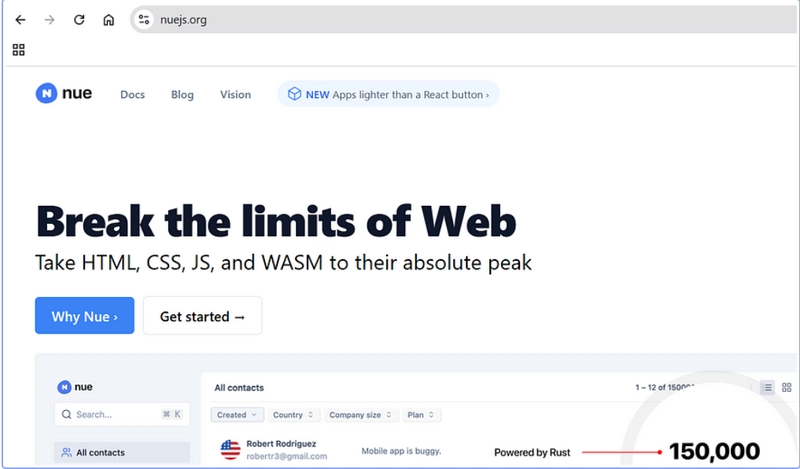Frontend Challenge February Edition !
Love is a complex and powerful emotion that can be experienced and expressed in many different ways. Understanding how you and others give and receive love can improve relationships, enhance communication, and strengthen emotional connections. Dr. Gary Chapman's 5 Love Languages theory offers insight into the five primary ways individuals express love. By identifying your love language, you can build deeper, more meaningful relationships with those around you. GitHub Link :-- krishna-ommune.github.io What Are the 5 Love Languages? Dr. Gary Chapman, a renowned marriage counselor, proposed the concept of five love languages: Words of Affirmation, Acts of Service, Receiving Gifts, Quality Time, and Physical Touch. These love languages describe how people express their feelings of affection toward others. Each individual may have one primary love language, but they could also identify with secondary languages. 1. Words of Affirmation For people whose primary love language is Words of Affirmation, verbal expressions of love are the most meaningful. Compliments, appreciation, and encouragement can significantly impact their emotional well-being. Hearing "I love you" or "You're amazing" fills their heart with joy and connection. Examples: Compliments Verbal encouragement Expressing appreciation for someone 2. Acts of Service If your love language is Acts of Service, actions speak louder than words. You feel most loved when others take the time to do things for you, whether it's making your favorite meal, helping with chores, or lending a hand during difficult times. These thoughtful gestures convey love more than anything else. Examples: Cooking a meal for someone Helping with household chores Offering support during tough times 3. Receiving Gifts People with a primary love language of Receiving Gifts feel deeply appreciated when they receive meaningful presents. It’s not about materialism; it’s the thought behind the gift that counts. Small or large, a gift can symbolize the love and effort the giver put into it. Examples: Giving thoughtful presents Special surprises Personal tokens of affection 4. Quality Time Quality Time is a love language that revolves around undivided attention. People with this love language cherish moments spent together, whether engaging in meaningful conversation or sharing an activity. Time together is viewed as an investment in the relationship. Examples: Having deep, uninterrupted conversations Going for walks together Sharing hobbies or activities 5. Physical Touch For those whose primary love language is Physical Touch, love is expressed through physical affection such as hugs, kisses, hand-holding, and cuddling. These physical gestures provide comfort and reassurance, making the person feel loved and valued. Examples: Hugs and kisses Holding hands Physical closeness Why Identifying Your Love Language Matters Understanding your love language and that of your partner, friends, and family members can help you communicate more effectively. When you speak someone else's love language, it fosters a deeper connection and emotional intimacy. Furthermore, it helps avoid misunderstandings or emotional distance that may occur when love is expressed in a way that isn't naturally received by others. For example, if your partner’s love language is Physical Touch, and you primarily express love through Words of Affirmation, there may be moments when they don’t feel as loved, even though you’re communicating love in your own way. Recognizing and adjusting your approach to love can improve both understanding and affection. How to Discover Your Primary Love Language Dr. Chapman’s 5 Love Languages quiz is a simple and effective way to discover your primary love language. The quiz asks a series of questions that help reveal which love language resonates with you the most. Alternatively, you can pay attention to how you express affection. Do you often compliment others? Do you like to surprise your loved ones with gifts? Are you always eager to spend time together? The way you show love is a clue to your primary love language. Love Language Distribution: A Visual Representation To gain further clarity, here’s a visual representation of how love languages are distributed. Take a look at the chart below to understand how different love languages manifest in people: Love Language Discovery ❤️ ❤️ ❤️ ❤️ ❤️ Discover Your Love Language Understanding how you give and receive love Words of Affirmation Acts of Service Receiving Gifts Quality Time Physical Touch What's Your Pri

Love is a complex and powerful emotion that can be experienced and expressed in many different ways. Understanding how you and others give and receive love can improve relationships, enhance communication, and strengthen emotional connections. Dr. Gary Chapman's 5 Love Languages theory offers insight into the five primary ways individuals express love. By identifying your love language, you can build deeper, more meaningful relationships with those around you.
GitHub Link :--
What Are the 5 Love Languages?
Dr. Gary Chapman, a renowned marriage counselor, proposed the concept of five love languages: Words of Affirmation, Acts of Service, Receiving Gifts, Quality Time, and Physical Touch. These love languages describe how people express their feelings of affection toward others. Each individual may have one primary love language, but they could also identify with secondary languages.
1. Words of Affirmation
For people whose primary love language is Words of Affirmation, verbal expressions of love are the most meaningful. Compliments, appreciation, and encouragement can significantly impact their emotional well-being. Hearing "I love you" or "You're amazing" fills their heart with joy and connection.
Examples:
- Compliments
- Verbal encouragement
- Expressing appreciation for someone
2. Acts of Service
If your love language is Acts of Service, actions speak louder than words. You feel most loved when others take the time to do things for you, whether it's making your favorite meal, helping with chores, or lending a hand during difficult times. These thoughtful gestures convey love more than anything else.
Examples:
- Cooking a meal for someone
- Helping with household chores
- Offering support during tough times
3. Receiving Gifts
People with a primary love language of Receiving Gifts feel deeply appreciated when they receive meaningful presents. It’s not about materialism; it’s the thought behind the gift that counts. Small or large, a gift can symbolize the love and effort the giver put into it.
Examples:
- Giving thoughtful presents
- Special surprises
- Personal tokens of affection
4. Quality Time
Quality Time is a love language that revolves around undivided attention. People with this love language cherish moments spent together, whether engaging in meaningful conversation or sharing an activity. Time together is viewed as an investment in the relationship.
Examples:
- Having deep, uninterrupted conversations
- Going for walks together
- Sharing hobbies or activities
5. Physical Touch
For those whose primary love language is Physical Touch, love is expressed through physical affection such as hugs, kisses, hand-holding, and cuddling. These physical gestures provide comfort and reassurance, making the person feel loved and valued.
Examples:
- Hugs and kisses
- Holding hands
- Physical closeness
Why Identifying Your Love Language Matters
Understanding your love language and that of your partner, friends, and family members can help you communicate more effectively. When you speak someone else's love language, it fosters a deeper connection and emotional intimacy. Furthermore, it helps avoid misunderstandings or emotional distance that may occur when love is expressed in a way that isn't naturally received by others.
For example, if your partner’s love language is Physical Touch, and you primarily express love through Words of Affirmation, there may be moments when they don’t feel as loved, even though you’re communicating love in your own way. Recognizing and adjusting your approach to love can improve both understanding and affection.
How to Discover Your Primary Love Language
Dr. Chapman’s 5 Love Languages quiz is a simple and effective way to discover your primary love language. The quiz asks a series of questions that help reveal which love language resonates with you the most.
Alternatively, you can pay attention to how you express affection. Do you often compliment others? Do you like to surprise your loved ones with gifts? Are you always eager to spend time together? The way you show love is a clue to your primary love language.
Love Language Distribution: A Visual Representation
To gain further clarity, here’s a visual representation of how love languages are distributed. Take a look at the chart below to understand how different love languages manifest in people:
lang="en">
charset="UTF-8">
name="viewport" content="width=device-width, initial-scale=1.0">
</span>Love Language Discovery<span class="nt">
id="app-container">
class="heart" style="top: 10%; left: 10%;">❤️ 










































































































































































![[The AI Show Episode 142]: ChatGPT’s New Image Generator, Studio Ghibli Craze and Backlash, Gemini 2.5, OpenAI Academy, 4o Updates, Vibe Marketing & xAI Acquires X](https://www.marketingaiinstitute.com/hubfs/ep%20142%20cover.png)




























































































































![[DEALS] The Premium Learn to Code Certification Bundle (97% off) & Other Deals Up To 98% Off – Offers End Soon!](https://www.javacodegeeks.com/wp-content/uploads/2012/12/jcg-logo.jpg)


![From drop-out to software architect with Jason Lengstorf [Podcast #167]](https://cdn.hashnode.com/res/hashnode/image/upload/v1743796461357/f3d19cd7-e6f5-4d7c-8bfc-eb974bc8da68.png?#)








































































































.png?#)


































_Christophe_Coat_Alamy.jpg?#)
.webp?#)
 (1).webp?#)






































































































![Apple Considers Delaying Smart Home Hub Until 2026 [Gurman]](https://www.iclarified.com/images/news/96946/96946/96946-640.jpg)
![iPhone 17 Pro Won't Feature Two-Toned Back [Gurman]](https://www.iclarified.com/images/news/96944/96944/96944-640.jpg)
![Tariffs Threaten Apple's $999 iPhone Price Point in the U.S. [Gurman]](https://www.iclarified.com/images/news/96943/96943/96943-640.jpg)





























































































































